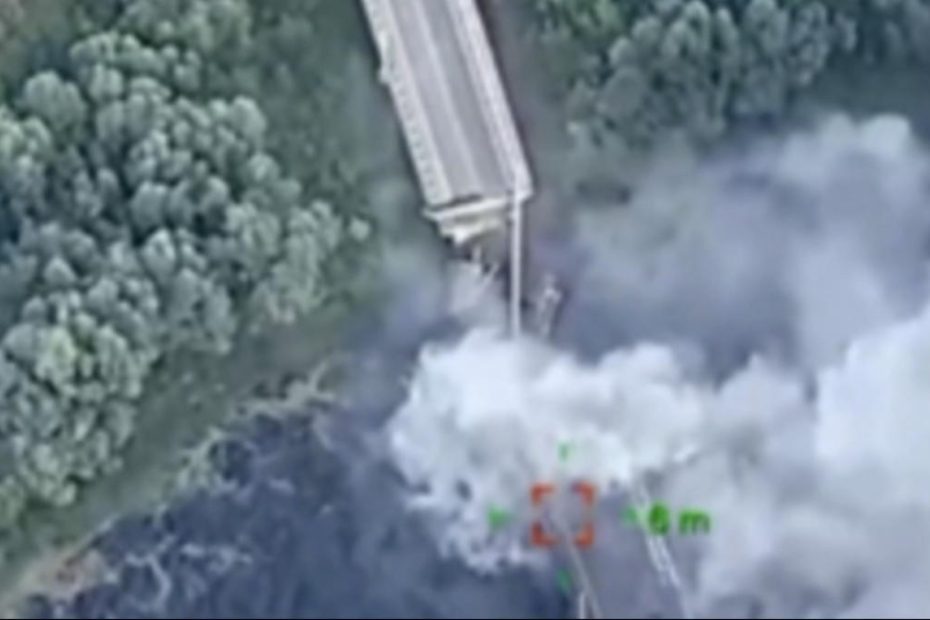KYIV, Ukraine (AP) — Ukraine has destroyed a key bridge in Russia's Kursk region and attacked a second bridge nearby, less than two weeks after launching a stunning cross-border incursion that disrupted Russian supply routes and may have signaled that its forces were planning to dig in.
Russian pro-Kremlin military bloggers have acknowledged that the destruction of the first bridge, which spanned the Seim River near the town of Glushkovo, will hamper the delivery of supplies to Russian forces repelling the Ukrainian invasion, though Moscow could still use pontoons and smaller bridges in the area. Ukrainian air force chief Lt. Mykola Oleshchuk on Friday posted a video of a Ukrainian airstrike that split the bridge in two.
According to Oleshchuk and Russian regional governor Alexei Smirnov, Ukrainian forces attacked a second bridge in Russia less than two days later.
As of Sunday morning, there were no official reports on where exactly the second bridge attack took place. Russian Telegram channels claimed that a second bridge over the Seim, in the village of Zvannoe, had been hit.
According to Russian news site Mash, the strikes left the area with only one bridge intact. The Associated Press could not immediately verify these claims, but if confirmed, the Ukrainian strikes would further complicate Moscow's efforts to replenish its troops in Kursk and evacuate civilians.
Glushkovo is located about 12 kilometers (7.5 miles) north of the Ukrainian border and about 16 kilometers (10 miles) northwest of the main fighting zone at Kursk. Zvannoe is another 8 kilometers (5 miles) northeast.
Kiev has remained tight-lipped about the planned scale and objectives of the blitz on Russia. It was the largest attack on the country since World War II, catching the Kremlin by surprise and leaving dozens of villages and hundreds of prisoners in Ukrainian hands.
The Ukrainians advanced deep into the Kursk region in several directions, meeting little resistance and sowing chaos and panic. Ukraine’s Supreme Commander-in-Chief, General Oleksandr Syrskyi, claimed last week that his forces had overrun 1,000 square kilometers (390 square miles) of the Kursk region, although it has not been possible to independently verify what exactly Ukrainian forces effectively control.
But the bridge attacks, apparently aimed at thwarting a Russian counterattack in Kursk, could signal that Kiev is planning to gain a foothold in the region – or at least signal to Moscow that it is planning to do so.
Analysts say that while Ukraine could try to consolidate its gains inside Russia, this would be a risky move given Kiev’s limited resources, as its supply lines extending deep into Kursk would be vulnerable to Russian attack.
The invasion has already boosted morale in Ukraine, which was undermined by a failed counterattack last summer and months of Russian victories in the eastern Donbas region, and shown that it can take the initiative.
It resembles Ukraine's lightning-fast operation in September 2022, led by Syrskyi, in which her forces regained control of the northeastern region of Kharkiv after taking advantage of Russia's shortage of manpower and lack of field fortifications.

